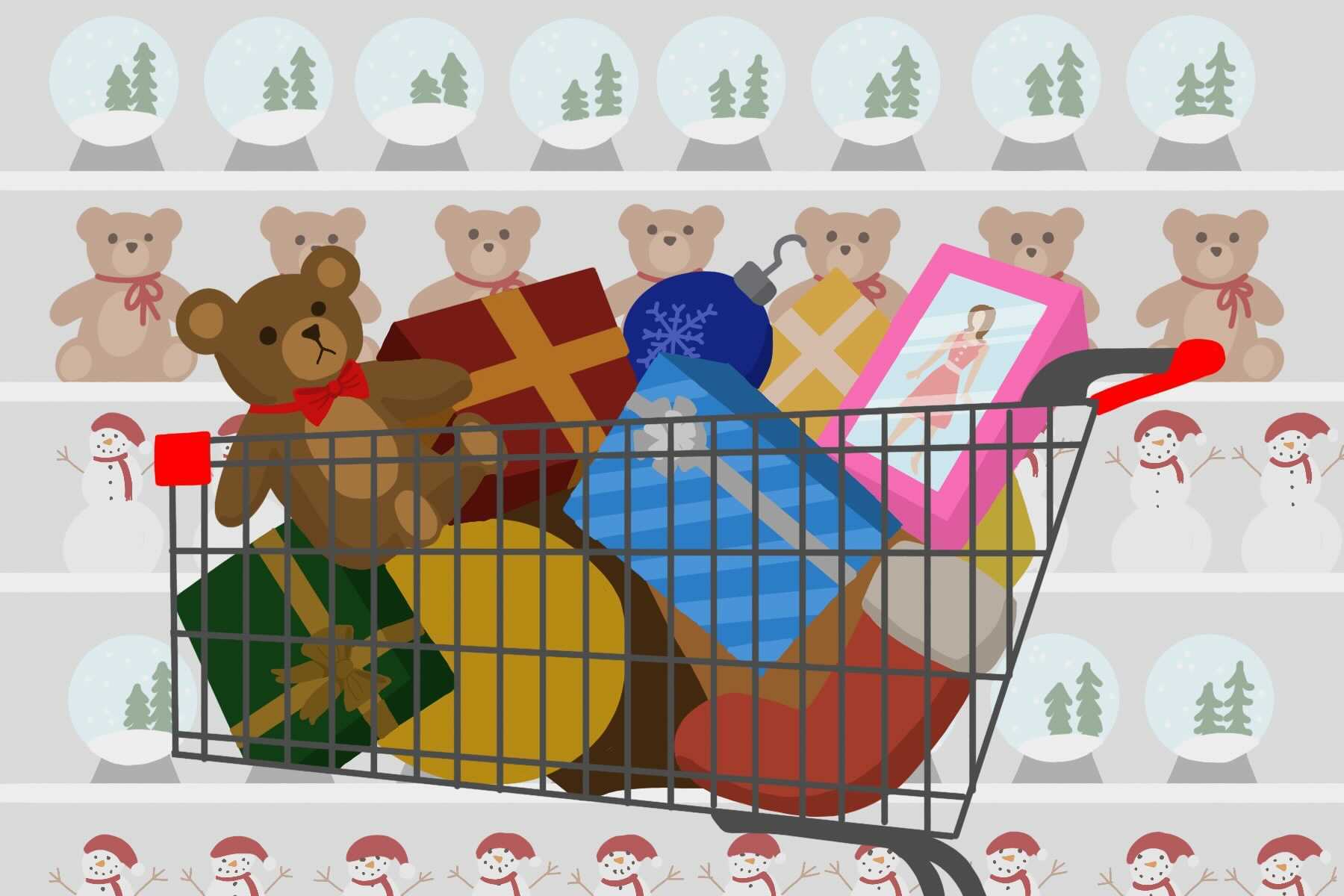It is no secret that Christmas tends to revolve around gifts: gift giving, gift making and gift exchanging. But a gift-centric Christmas isn’t necessarily a bad thing; swapping presents is as much of a social interaction as it is a financial one, and the massive flow of cash during the holidays is actually hugely beneficial to our economy.
The increased demand in the months leading up to Christmas fuels many retailers and allows them to thrive yearlong. A lot of companies — especially the ones involved in the toy industry — increase manufacturing ahead of time in anticipation of the holiday rush and will hire more staff to accommodate for this rise in demand. This boosts the economy by not only increasing sales but promoting jobs and wages as well.
Retailers have gotten smarter and smarter over the years. They know that Christmas time can be a gold mine for sellers if approached the right way. Companies can increase customer spending tenfold by promoting consumer awareness and manipulating the retail environment to encourage the generosity that people feel during the holidays; they use clever and subtle strategies to encourage shopping. What are some of the things companies do to influence people to clean out shelves and empty their wallets? Here are a few marketing tactics that companies use to get you to spend more during the holidays.
Christmas Decorations
There’s nothing like that explosion of red and green decorations that stores put up months before Christmas to remind you that the holidays are not only just around the corner, but that you should start getting into the spirit, too. This is called Christmas creeping, and in the UK it’s referred to as the golden quarter. Retailers put up Christmas decorations way before December to shift consumers into the holiday spirit. It seems like they do this earlier and earlier every year — and there’s a reason.
Retailers take their cues from shopper behavior; a survey found that more than half of consumers planned to start their Christmas shopping before Thanksgiving this year, which is an increase from last year. By adjusting timing based on consumer behavior, retailers can maximize their profits by presenting the Christmas season earlier.
Decorations remind people that over-spending and splurging are okay because it’s the holiday season. In addition, whether it’s a neighbor or company, people who decorate for Christmas are seen as more friendly, which is great for sellers who are trying to bond with consumers. This is important because customers are more likely to buy when they feel a connection with their producer. A report also stated that Christmas decorations make people happier, which spikes dopamine, and when buyers feel good, they buy more.
Discounts
How many commercials or advertisements have you seen that promote holiday deals? Special holiday commercials that display great prices invoke feelings of nostalgia and comfort in the hopes of generating more sales. It’s not uncommon for retailers to push numerous discounts, coupons and promotions this time of year. This is great for consumers, but what’s in it for retailers? With a huge influx of sales from holiday spending, profits even themselves out and companies are able to reduce prices significantly.
November’s Black Friday and Cyber Monday are parts of the biggest shopping weekend of the year. Because of these discount days, sales go through the roof, allowing companies to slash prices and offer deals they otherwise can’t. Retailers often compete with each other, so when a competitor offers reduced prices, others must follow suit. As companies approach the end of the year, they also want to push out old merchandise, as well as drive foot traffic to their stores. Thus, empty shelves are a good thing and are seen as an achievement.
Christmas Music
Lastly, music has been used as a tool to increase customer spending for decades, and not just during Christmas. Studies show that playing both upbeat and slow music in the background of stores makes people more likely to buy products, but at different speeds. Slow music allows more time for musing, while face-paced beats promote rushing to the register. The important takeaway is that music can influence customer behavior and should be taken just as seriously as huge marketing campaigns.
Music also evokes an emotional response and inspires action in listeners. This tactic is used more blatantly during the Christmas season; there’s a reason why “Wonderful Christmastime” is played over and over again. Studies show that music and even other sensory stimuli such as scents make customers happier with a store. Creating an atmosphere for people — especially one that increases generosity and spending — makes them more likely to buy. If you think it’s annoying, imagine how the poor staff must feel, being forced to endure the incessant, repetitive music all day long. Nevertheless, many customers love it, and most importantly, it encourages people to buy more, which is the main goal for sellers.
With many people engaging in fun gift-exchange events this year, such as Secret Santa and Christmas parties both virtual and in-person, the holidays are undeniably a time for buying and spending. Gift giving is not only a positive social exchange but an important economic one. Our economy reaps the benefits of the festive season unlike any other, increasing both sales and jobs.
At first glance, it may unnerve you to think that companies are trying out all kinds of strategies to subtly influence your behavior, especially through the use of seemingly innocuous things like decorations, discounts and music. But companies only use these tactics because it drives sales and helps them to achieve their goals. If your aim is to shop for gifts that make others happy, no one would blame you for going the extra mile to do so.
















